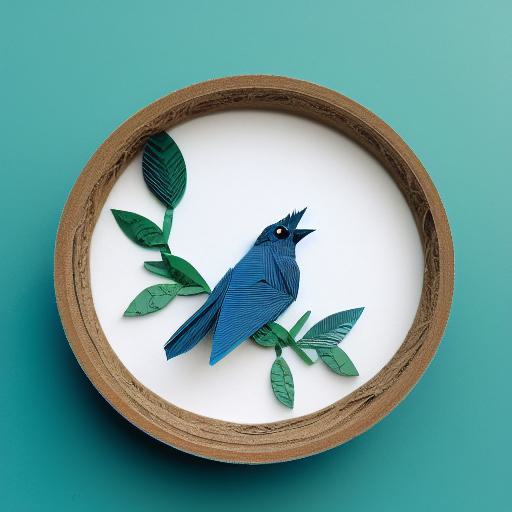How to write this prompt?
How each individual part influences the image being generated. Here’s a detailed explanation in point form:
- “A detailed many layered paper art in a round frame”: This sets the medium and format for the artwork to be generated, indicating that it will be a paper-based piece in a circular frame. This may influence the style and composition of the image.
- “Paper sculpture, paper art”: These terms further emphasize the material and technique used to create the artwork. They may influence the level of detail and complexity in the final image.
- “A blue bird sitting on top of a green plant”: This describes the subject matter of the artwork, indicating that it will feature a bird perched on a plant. This may influence the pose, color, and style of the bird and plant elements in the image.
- “In a blue shade background”: This sets the background color and mood for the artwork, suggesting a blue-toned environment. This may influence the color palette and lighting of the image.
- “Handicraft, Behance contest winner, ecological art“: These terms provide additional context and inspiration for the artwork, suggesting that it should showcase skillful craftsmanship and have a connection to environmental themes.
- “Style of titmouse animation, wildlife illustration, bird view”: These references to different styles and genres of art provide further guidance on the aesthetic and composition of the image, potentially influencing factors such as perspective, texture, and level of realism.
Overall, each individual part of the AI image prompt provides specific instructions and inspiration for the image to be generated, guiding the AI model’s decisions about elements such as color, composition, and subject matter. By carefully crafting a prompt that includes these key elements, it’s possible to generate an image that aligns closely with the desired artistic vision.
What is the technique used to create many layered paper art?
The technique used to create many layered paper art is called quilling, also known as paper filigree. It involves rolling and shaping thin strips of paper into various shapes and designs, which are then layered and glued together to create intricate patterns and textures.
How to make a paper sculpture of a bird and plant?
To make a paper sculpture of a bird and plant, you would first need to choose the type of paper you want to use and sketch out a rough design of the sculpture. Then, you would create the individual components of the sculpture, such as the bird’s body, wings, and tail, and the plant’s leaves and stem, using quilling or other paper crafting techniques. Finally, you would assemble the components and attach them to a base or frame, using glue or other adhesive.
Why is ecological art important?
Ecological art is important because it can raise awareness about environmental issues and inspire action to protect the natural world. By using art to explore and communicate ecological themes, artists can engage audiences in a creative and meaningful way, encouraging them to reflect on their relationship to the environment and consider how they can make a positive impact. Additionally, ecological art can help to promote sustainability and conservation efforts, by drawing attention to the beauty and value of the natural world.
How does AI generate art?
AI can generate art using a process called generative adversarial networks (GANs) or deep learning algorithms. These algorithms are trained on large datasets of existing art, allowing them to learn the patterns and styles of different artists and genres. Once the AI model is trained, it can generate new art by creating variations on existing images or by combining elements from different images to create something entirely new.
The process of generating art using AI typically involves several steps. First, the AI model is trained on a dataset of existing images, which it uses to learn the patterns and styles of different artists and genres. Then, the model generates new images by using various techniques such as random sampling, interpolation, or blending. Finally, the generated images are evaluated by human judges or other metrics to assess their quality and artistic value.
What types of art can be generated using AI?
AI can generate a wide variety of art forms, including paintings, drawings, photographs, sculptures, and even music and literature. The type of art generated depends on the training data used to train the AI model and the specific techniques and algorithms used to generate the art.
Some examples of AI-generated art include:
- Style transfer images, which combine the content of one image with the style of another image to create a new, hybrid image.
- Deep dream images, which use deep learning algorithms to generate surreal and abstract images from existing photos or images.
- GAN-generated images, which use two AI models to generate new images that are similar to existing images, but with unique variations and styles.
- 3D printed sculptures, which use AI algorithms to generate intricate and complex shapes and designs that can be printed using 3D printers.
Overall, AI has the potential to revolutionize the way we create and appreciate art, by enabling us to explore new styles and techniques, and by expanding our understanding of the creative process.
Enhance your designs with stunning AI-generated art using Visual Paradigm Online. With just a few clicks, you can incorporate unique and visually appealing graphics into your projects, thanks to the platform’s user-friendly interface and a wide selection of design templates and assets. Experiment with various styles and layouts until you achieve the perfect combination for your needs. Try Visual Paradigm Online today and take your designs to the next level!


